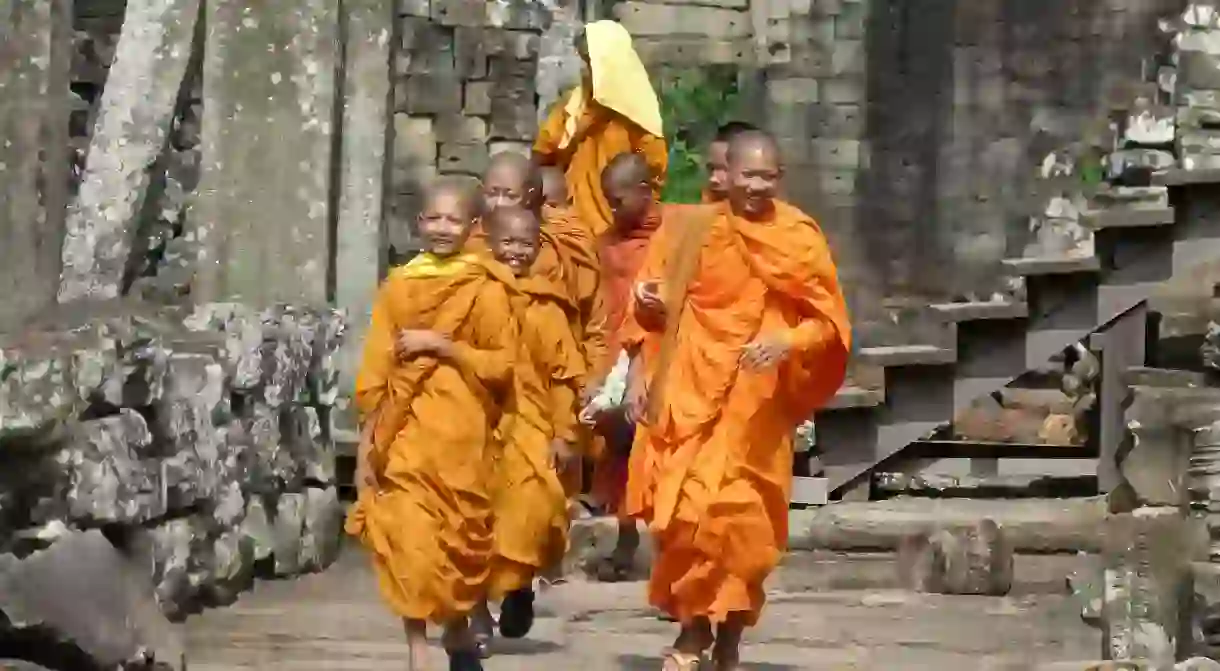How Locals in Cambodia Practice Buddhism

Theravada Buddhism is the predominant religion in Cambodia, and about 95% of the population practices the religion. Many other Southeast Asian countries also practice Buddhism, which began around the 6th century BC. Religion plays a large role in the daily lives of Cambodians, and instances and relics of Buddhism are seen throughout the country. With Buddha’s birthday right around the corner, Culture Trip takes a look at the religion and how locals in Cambodia practice it.
Theravada Buddhism
Those who practice Theravada Buddhism ultimately want to achieve enlightenment, and this is true in Cambodia as well as the other countries who have adopted it as their major religion, including Thailand, Myanmar, and Laos. They do so by following the teachings of Prince Siddhartha Gautama. When he was 29 years old, he left his home in hopes of finding something meaningful, and finally became the Buddha after meditating under a bodhi tree for 49 days. Since then, this religion has slowly made its way throughout Southeast Asia and is one of the most practiced religions in addition to Islam, Hinduism, and Christianity. In the 19th and 20th centuries, French influences suppressed Buddhism, as did the Khmer Rouge in the late 1970s; however, the country worked diligently to repair both the country and its religion in the aftermath of both of these eras.

They visit Wat Ounalom
Located near the Royal Palace of Cambodia in Phnom Penh is Wat Ounalom. It is here where visitors will find many monks meandering about, as it is actually the center of Buddhism in Cambodia. The stupa located at the back of the temple is said to contain a hair of Buddha as well. Admission to the temple is free.

They ask for good luck at Wat Phnom
Wat Phnom in Phnom Penh is one temple in which visitors will find Buddhist Cambodians praying. This temple, also known as the Hill Temple, sits exactly where you might think it would, on a hill, which stands approximately 90 feet (27.4 meters) tall, and it is here where visitors will find the statue of Lady Penh. This woman is said to have found four Buddha statues in the river, rescued them, and built the temple to house them. There is a $1 entrance fee into the temple and an additional $2 admission fee to get into the museum that sits on the temple grounds. In addition to these two temples in the capital, visitors can see these religious relics across the country.

They make merit
One way in which Buddhists hope to achieve enlightenment is by making merit. They do this in a number of different ways; for example, they give donations and money to those in need, work at temples, and make contributions to monks. Children make merit as well and are oftentimes expected to do minimal chores on temple grounds.

They become monks
All men are required to become monks, or Bonzes; however, not all of them necessarily do so. They are expected to do so if they are over the age of 16, though many boys become monks before then. Women do not become monks; however, older women (especially widows) can take on the role of nuns and work at the temples.

They party
There are a number of Cambodian festivals derived from Buddhism. These take place almost all year long, with some of the biggest ones including the Chol Chnam, otherwise known as the Cambodian New Year Celebration, Meak Bochea Day, which commemorates Buddha’s last sermon, and many others.














